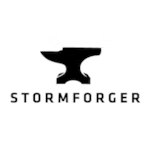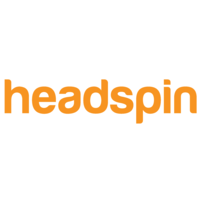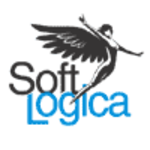Description

StormForge

HeadSpin
Comprehensive Overview: StormForge vs HeadSpin
StormForge and HeadSpin are two distinct platforms catering to different aspects of technology optimization, albeit with some overlapping objectives in performance enhancement. Here’s a comprehensive overview of each, including their primary functions, target markets, market share, user base, and key differentiating factors.
StormForge
a) Primary Functions and Target Markets
- Primary Functions: StormForge is primarily focused on Kubernetes resource optimization. It offers machine learning-driven solutions to enhance the efficiency and performance of cloud-native applications. The key functions include automatic tuning of Kubernetes applications, optimizing cloud resource allocation, and performance testing to ensure applications run efficiently at scale.
- Target Markets: The target market primarily consists of enterprises that use Kubernetes and cloud-native applications across various sectors such as finance, healthcare, technology, and e-commerce. Companies that have adopted DevOps and are looking for cost-efficient, performance-optimized cloud deployment strategies are typical users.
b) Market Share and User Base
- StormForge operates in a competitive niche within the broader market of cloud optimization. While it may not have a dominant market share compared to larger cloud service providers, it has a growing presence, especially among companies heavily invested in Kubernetes environments.
- The user base mainly comprises mid to large-scale enterprises looking to leverage machine learning for cloud efficiency, along with tech-forward startups capitalizing on advanced DevOps tools.
c) Key Differentiating Factors
- Machine Learning Optimization: A major differentiator is its use of machine learning models to predict and apply optimal resource configurations automatically.
- Integration with Kubernetes: Seamless integration with Kubernetes provides robust solutions directly tailored for this widespread container orchestration platform.
- Focus on Cost Efficiency: By optimizing cloud resources, StormForge helps businesses significantly reduce cloud spend and improve application performance simultaneously.
HeadSpin
a) Primary Functions and Target Markets
- Primary Functions: HeadSpin offers a comprehensive platform for performance testing and monitoring, particularly focused on mobile, web, audio, and video applications. It provides capabilities for real-world user experience analysis, bug detection, API performance monitoring, and network condition testing across various devices and locations.
- Target Markets: Its target market is broad, covering industries such as gaming, media, retail, technology, and telecommunications. Businesses that demand high-quality user experience across mobile and web platforms form the core customer base.
b) Market Share and User Base
- HeadSpin has carved out a significant niche in the mobile and web application testing space, competing with other major performance testing platforms. Its ability to offer real-time testing across numerous devices and networks situates it favorably among competitors.
- The user base includes a wide range of clients from startups to large enterprises that are focused on enhancing user experience and performance metrics globally.
c) Key Differentiating Factors
- Global Device and Network Testing: It provides extensive support for testing on devices located around the world, which is critical for applications targeting global audiences.
- End-to-End Visibility: Offers detailed insights and analytics covering the entire spectrum of the user experience, from the client-side application behavior to server-side interactions.
- Comprehensive Testing Capabilities: Supports multiple types of testing (functional, performance, load) on the same platform, making it a versatile choice for developers and QA teams.
Comparison and Conclusion
- Focus Area: While StormForge focuses on Kubernetes and cloud resource optimization, HeadSpin is more geared towards application performance and user experience testing, covering mobile and web platforms.
- Target Audience: StormForge appeals to DevOps teams in cloud-native environments, whereas HeadSpin targets QA and development teams aiming to optimize user experiences.
- Technological Approach: StormForge leverages machine learning for optimization, while HeadSpin offers device and network diversity for holistic performance insights.
Both platforms offer invaluable tools tailored to different aspects of performance and optimization in modern software environments. Their adoption will largely depend on the specific needs of an organization, whether it be efficient cloud resource management or enhanced user experience assurance.
Contact Info

Year founded :
2015
+1 617-209-3159
Not Available
United States
http://www.linkedin.com/company/stormforge

Year founded :
2015
+1 650-646-5388
Not Available
United States
http://www.linkedin.com/company/headspin
Feature Similarity Breakdown: StormForge, HeadSpin
StormForge and HeadSpin are both platforms aimed at optimizing and improving software performance, but they cater to different aspects of that goal. Here's a breakdown of their feature similarities and differences:
a) Core Features in Common:
-
Performance Optimization: Both platforms focus on optimizing performance, albeit in different areas. StormForge is centered around Kubernetes and cloud-native environments, optimizing applications by using machine learning to tune configurations. HeadSpin works on digital experiences by ensuring optimal performance of web, mobile, and IoT applications.
-
Analytics and Insights: Both provide analytics and insights into system performance, helping users understand and improve their applications. They utilize data to identify performance bottlenecks and suggest improvements.
-
Integration Capabilities: Each platform can integrate with a range of tools and systems to fit into existing workflows and enhance performance optimization strategies.
-
Automation: Both platforms emphasize automation in their processes to reduce manual workload and ensure more consistent performance improvements.
b) User Interface Comparison:
-
StormForge: The user interface of StormForge is typically designed to cater to developers and DevOps professionals working in Kubernetes environments. It focuses on providing a streamlined experience for setting up experiments, running simulations, and implementing optimizations. There may be a heavier reliance on technical configurations and integrations common to cloud-native environments.
-
HeadSpin: HeadSpin's UI is generally tailored for a broader range of users, including developers, QA, and business teams. It offers more visual dashboards to monitor real-time performance metrics across devices and networks. The interface emphasizes ease of use and the ability to quickly gain insights into the user experience across different applications and network conditions.
c) Unique Features:
-
StormForge:
- Machine Learning for Config Optimization: A unique aspect of StormForge is its use of machine learning algorithms to automatically find the best configurations for Kubernetes applications, aiding in efficient resource usage and performance optimization.
- Focus on Kubernetes and Cloud-Native Applications: StormForge specializes specifically in Kubernetes environments, providing tools to manage and optimize applications deployed on this platform.
-
HeadSpin:
- Real Device Cloud: HeadSpin provides access to a cloud of real devices on various networks globally, allowing users to test mobile applications and services in real-world conditions.
- User Experience and Network Testing: A key differentiator is HeadSpin's ability to analyze performance from an end-user perspective across different channels and networks, offering insights into how actual users experience applications.
- Competitive Benchmarking: HeadSpin offers features that allow users to compare their application performance against competitors, providing a competitive edge in the market.
In conclusion, while both StormForge and HeadSpin offer performance optimization features, they serve different niches with some overlap in analytics and automation. StormForge is tailored towards cloud-native environments, especially Kubernetes, whereas HeadSpin is geared toward end-user experience across a variety of platforms and devices.
Features

Not Available

Not Available
Best Fit Use Cases: StormForge, HeadSpin
To determine the best fit use cases for StormForge and HeadSpin, it’s important to consider the unique strengths and primary applications of each platform.
StormForge
a) For what types of businesses or projects is StormForge the best choice?
StormForge is primarily designed for businesses that rely heavily on Kubernetes environments. It excels in optimizing cloud-native applications through AI-driven performance tuning and resource optimization. The following scenarios highlight its best-fit use cases:
-
Cloud-Native and DevOps Teams: Businesses with robust DevOps practices and teams focused on developing and managing cloud-native applications will find StormForge invaluable for its ability to optimize Kubernetes deployments efficiently.
-
Enterprises with High Cloud Costs: Companies looking to reduce their cloud infrastructure costs while maintaining or improving application performance will benefit from StormForge's resource optimization capabilities.
-
Organizations Focused on Sustainability: Enterprises aiming to reduce their environmental footprint benefit from StormForge’s focus on optimizing resource utilization to decrease energy consumption and carbon emissions.
d) How do these products cater to different industry verticals or company sizes?
- Industry Verticals: Cloud services, financial services, e-commerce, and SaaS platforms are among the sectors that can greatly benefit from StormForge due to their reliance on efficient and scalable cloud infrastructure.
- Company Sizes: Medium to large enterprises with substantial cloud operations or those undergoing digital transformation initiatives would find StormForge particularly beneficial, given its potential to significantly optimize large-scale Kubernetes environments.
HeadSpin
b) In what scenarios would HeadSpin be the preferred option?
HeadSpin is an ideal choice for businesses seeking comprehensive digital experience monitoring and testing solutions. It is particularly suited to scenarios involving:
-
Mobile and Web Application Developers: HeadSpin offers extensive testing capabilities for both mobile and web applications, making it ideal for developers looking to ensure high performance and user satisfaction across devices and locations.
-
Quality Assurance Teams: With its ability to automate real-world testing and monitor performance across different network conditions and geographies, HeadSpin is a valuable tool for QA teams dedicated to maintaining application quality.
-
Telecom and Network Providers: Given its strengths in network performance monitoring, HeadSpin is well-suited for telecom companies and ISPs focused on optimizing their services and minimizing latency for end-users.
d) How do these products cater to different industry verticals or company sizes?
- Industry Verticals: HeadSpin is highly applicable to industries such as technology, telecommunications, media and entertainment, and e-commerce, where high-quality user experiences and application performance are crucial.
- Company Sizes: Both startups and large enterprises can benefit from HeadSpin. Startups can leverage it for its streamlined testing capabilities without investing in extensive in-house infrastructure, while large enterprises can utilize its global performance monitoring to maintain service quality.
In conclusion, both StormForge and HeadSpin serve distinct needs. StormForge is optimal for enterprises looking to maximize efficiency in their cloud-native applications, particularly with Kubernetes. HeadSpin, on the other hand, is best suited for companies prioritizing digital experience monitoring and performance testing across applications, particularly in mobile and web environments.
Pricing

Pricing Not Available

Pricing Not Available
Metrics History
Metrics History
Comparing teamSize across companies
Conclusion & Final Verdict: StormForge vs HeadSpin
To determine which product offers the best overall value between StormForge and HeadSpin, it's essential to analyze their purposes and functionalities, then contrast their strengths and weaknesses.
a) Best Overall Value
StormForge:
- Primarily focuses on Kubernetes performance optimization and cost reduction through machine learning.
- Offers an automated solution that aids developers in optimizing cloud resource allocation, which can result in significant cost savings and performance improvements for Kubernetes applications.
HeadSpin:
- Aims to provide comprehensive testing, monitoring, and analytics solutions for mobile, web, and IoT experiences.
- It excels in delivering real-world performance insights, user experience analysis, and quality of experience testing across different network conditions and devices.
Conclusion: The determination of "best value" largely depends on the specific needs and infrastructure setup of the user’s company. For organizations heavily invested in Kubernetes infrastructure looking to optimize cost and performance, StormForge provides more value. For companies prioritizing end-user experience and network performance across multiple platforms, HeadSpin is more appropriate.
b) Pros and Cons
StormForge:
- Pros:
- Automated machine learning-driven optimization can result in significant cost savings.
- Focused specifically on Kubernetes, providing precise solutions for containerized environments.
- Helps efficiently manage cloud resources and improve application performance.
- Cons:
- Limited to Kubernetes, so value may not be maximized if you don't rely extensively on this technology.
- May require some time for initial configuration and setup to tailor optimization to specific workloads.
HeadSpin:
- Pros:
- Offers extensive testing and performance metrics for mobile, web, and IoT, which is critical for user-focused product teams.
- Provides global testing capabilities, lending real-world insights into user experiences across different regions and conditions.
- Integrates well with existing CI/CD workflows for continuous testing.
- Cons:
- Less focused on cloud resource optimization, so not as useful for reducing cloud costs.
- Can be complex to configure to cover all necessary testing scenarios, especially for teams unfamiliar with comprehensive testing suites.
c) Specific Recommendations
-
Align with Business Needs: Consider what aspect of your tech stack or business need requires more immediate attention. If cutting down cloud consumption costs and optimizing performance on Kubernetes is critical, StormForge is likely the better choice. If ensuring excellent end-user experiences across platforms is more urgent, HeadSpin excels in that domain.
-
Infrastructure Considerations: If your infrastructure relies heavily on Kubernetes, StormForge offers a tailored solution. For those with a diverse infrastructure needing comprehensive performance testing across various devices, HeadSpin would be more suitable.
-
Long-term Strategy: Evaluate where the company plans to invest in the future. If cloud-native applications and infrastructure optimization are part of the strategic direction, gear towards StormForge. If the focus is on expanding digital touchpoints and enhancing quality assurance across varied devices and networks, HeadSpin stands out.
-
Integration and Learning Curve: Assess your team's readiness and the current technology stack. Choose a solution that can be integrated with minimal disruption and offers extensive support and training to shorten the learning curve.
In summary, the decision must be informed by immediate technical priorities and the strategic roadmap of your organization.
Add to compare
Add similar companies




